Star Wars Episode I: The Phantom Menace
6.6 /10 1 Votes
Director George Lucas Release date October 22, 1999 (India) Screenplay George Lucas Writer George Lucas Language English | 6.6/10 IMDb Genre Action, Adventure, Fantasy Film series Star Wars Duration Country United States | |||||||||||||||||||||||||||||||||
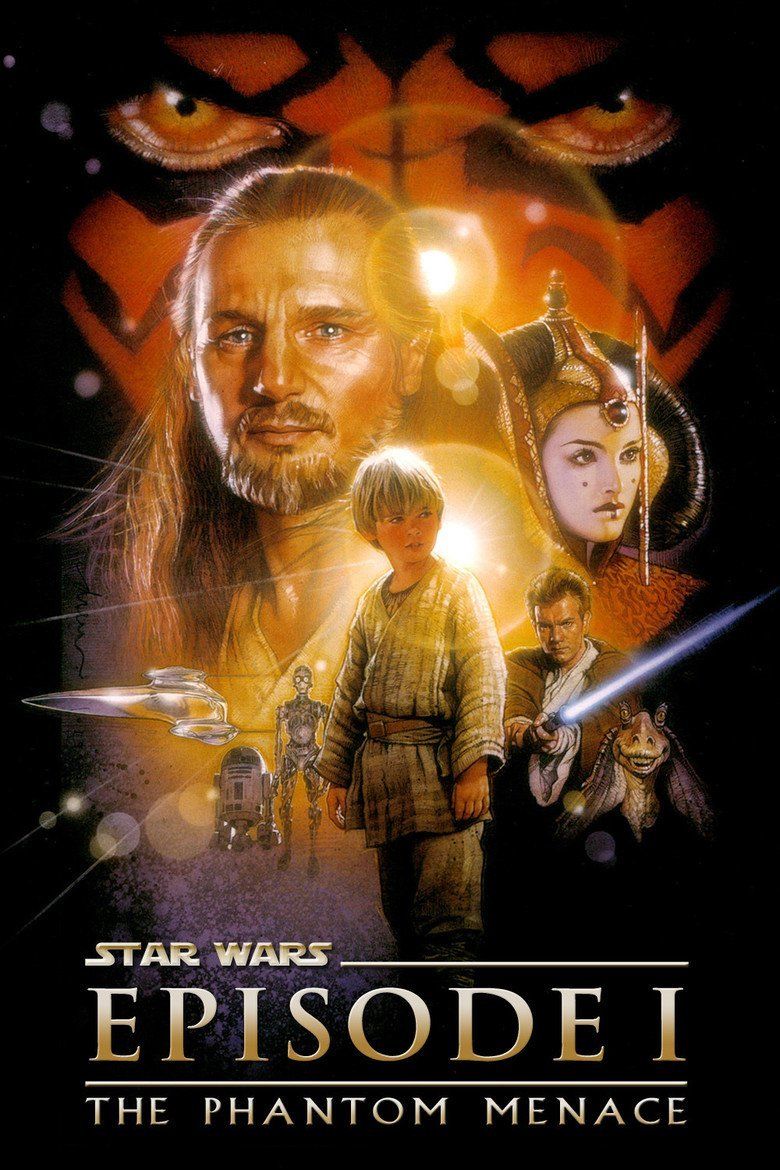 | ||||||||||||||||||||||||||||||||||
Release date May 19, 1999 (1999-05-19) Cast Liam Neeson (Qui-Gon Jinn), Ewan McGregor (Obi Wan Kenobi), Natalie Portman (Queen Amidala / Padmé), Jake Lloyd (Anakin Skywalker), Ian McDiarmid (Senator Palpatine), Anthony Daniels (C-3PO (voice))Similar movies Willow , The Hood Samaritan , Leopard Vision Vol.1 , Marching to Zion , Revelation - The Bride, The Beast & Babylon , The Seventh Sign Tagline Every generation has a legend. Every journey has a first step. Every saga has a beginning. | ||||||||||||||||||||||||||||||||||
Star wars episode i the phantom menace 1999 official movie trailer
Obi-Wan Kenobi (Ewan McGregor) is a young apprentice Jedi knight under the tutelage of Qui-Gon Jinn (Liam Neeson) ; Anakin Skywalker (Jake Lloyd), who will later father Luke Skywalker and become known as Darth Vader, is just a 9-year-old boy. When the Trade Federation cuts off all routes to the planet Naboo, Qui-Gon and Obi-Wan are assigned to settle the matter.
Contents
- Star wars episode i the phantom menace 1999 official movie trailer
- Star wars episode i the phantom menace trailer
- Plot
- Cast
- Development
- Pre production and design
- Filming
- Effects
- Music
- Themes
- Release
- Marketing
- Home media
- 3D re release
- Critical reception
- Box office performance
- Accolades
- References
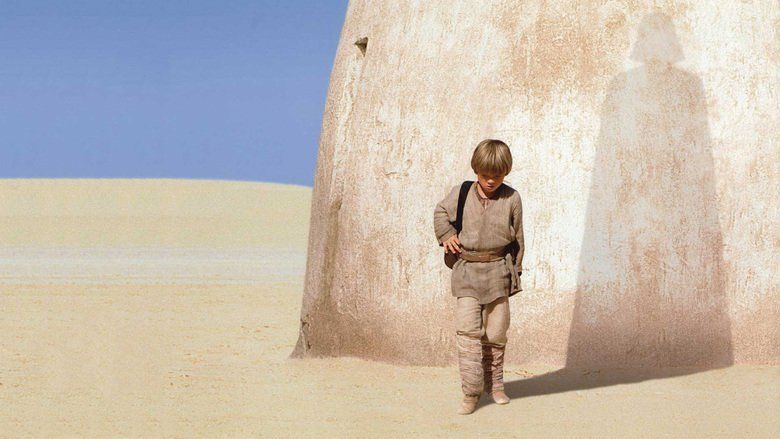
Star Wars Episode I: The Phantom Menace is a 1999 American epic space opera film written and directed by George Lucas, produced by Lucasfilm and distributed by 20th Century Fox. The fourth installment in the Star Wars series, the film stars Liam Neeson, Ewan McGregor, Natalie Portman, Jake Lloyd, Ian McDiarmid, Ahmed Best, Ray Park, Anthony Daniels, Kenny Baker, Pernilla August and Frank Oz. The film was Lucas first production as a film director after a 22-year hiatus following the original Star Wars film, and his fourth film overall.

The films narrative follows the Jedi Knight Qui-Gon Jinn and his apprentice Obi-Wan Kenobi. They escort and protect Queen Amidala, who is traveling from the planet Naboo to the planet Coruscant, hoping to find a peaceful end to a large-scale interplanetary trade dispute. The story also features a young Anakin Skywalker before he became a Jedi; he is introduced as a young slave boy who appears to have unusually strong nascent powers of the Force and must contend with the mysterious return of the Sith.
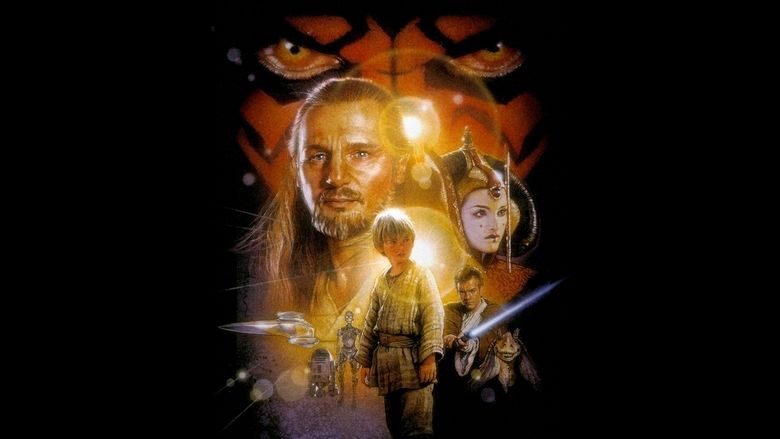
Lucas began production of this film after he concluded that film special effects had advanced to the level he wanted for the fourth film in the saga. Filming started on June 26, 1997, at locations including Leavesden Film Studios and the Tunisian desert. Its visual effects included extensive use of computer-generated imagery (CGI); some of its characters and settings were completely computerized and did not exist in the real world.
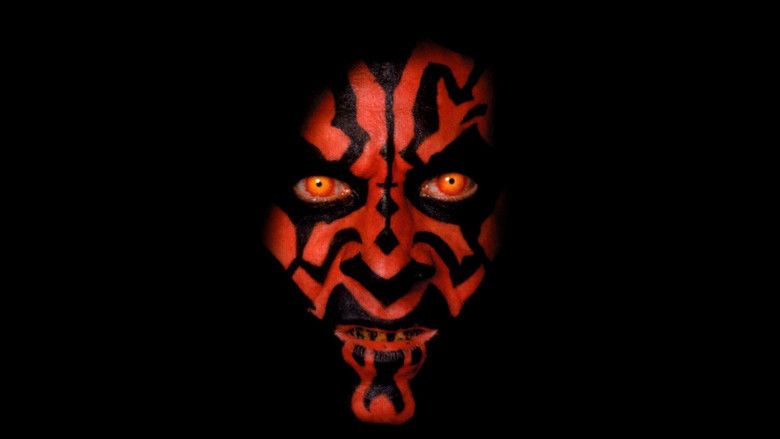
The Phantom Menace was released to theaters on May 19, 1999, sixteen years after the premiere of the previous Star Wars film, Star Wars Episode VI: Return of the Jedi. The films premiere was extensively covered by media and was greatly anticipated because of the large cultural following the Star Wars saga had cultivated. Despite mixed reviews by critics, who tended to praise the visuals and action sequences but criticized the writing, characterization and acting, it grossed more than US$924.3 million worldwide during its initial theatrical run, making it the second-highest-grossing film worldwide at the time—behind Titanic. It became the highest-grossing film of 1999, the highest-grossing Star Wars film, and is currently the fifth-highest-grossing film in North America unadjusted for inflation. A 3D reissue, which has earned an additional US$102.7 million at the box office and brought the films overall worldwide takings to over US$1 billion, was released in February 2012. The film was followed by two sequels, Star Wars Episode II: Attack of the Clones and Star Wars Episode III: Revenge of the Sith.

Anakin Skywalker, a young slave strong with the Force, is discovered on Tatooine. Meanwhile, the evil Sith have returned, enacting their plot for revenge against the Jedi.
Star wars episode i the phantom menace trailer
Plot
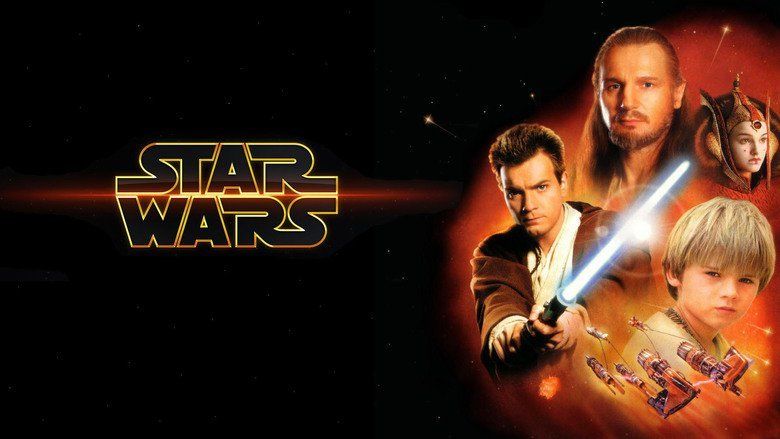
In response to taxation on trade routes in the Galactic Republic, the Trade Federation organizes a blockade of battleships around the planet Naboo. Supreme Chancellor Valorum dispatches Jedi Master Qui-Gon Jinn and his apprentice Obi-Wan Kenobi to negotiate with the Trade Federation leadership to end the blockade. Darth Sidious, a Sith Lord and the Trade Federations secret adviser, orders Federation Viceroy Nute Gunray to kill the Jedi and invade Naboo with an army of battle droids. The Jedi flee to Naboo, where Qui-Gon saves Gungan outcast Jar Jar Binks from being killed during the invasion. Indebted to the Jedi, Jar Jar leads them to an underwater Gungan city. There the Jedi try but fail to persuade the Gungan leader, Boss Nass into helping the people of Naboo, though they are able to obtain transportation to Theed, the capital city on the surface. They rescue Queen Amidala, the ruler of the Naboo people, and escape the planet on her royal starship, which is damaged as they pass the Federation blockade.
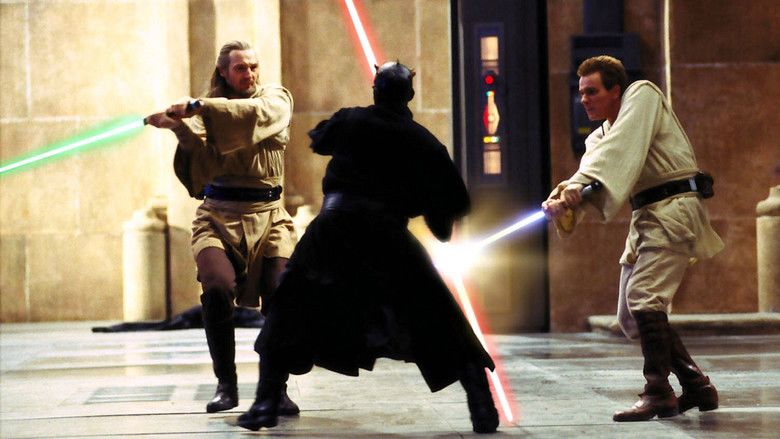
Amidalas ship is unable to sustain its hyperdrive and lands for repairs on the desert planet Tatooine. Qui-Gon, Jar Jar, astromech droid R2-D2, and Amidalas handmaiden Padme visit the settlement of Mos Espa to buy new parts at a junk shop. There they meet the shops owner Watto and his nine-year-old slave Anakin Skywalker, who is a gifted Podracer pilot and engineer, and has created a protocol droid called C-3PO. Qui-Gon senses a strong presence of the Force within Anakin and is convinced that he is the "chosen one" of Jedi prophecy who will bring balance to the Force. Qui-Gon wagers Anakins freedom with Watto in a Podrace, which Anakin wins. Anakin joins the group to be trained as a Jedi, leaving his mother Shmi behind. En route to their repaired starship, Qui-Gon enters a brief lightsaber duel with Darth Maul, Darth Sidious Sith apprentice who was sent to capture Amidala.

The Jedi escort Amidala to the Republic capital planet Coruscant so she can plead her peoples case to Chancellor Valorum in the Galactic Senate. Qui-Gon asks the Jedi Council to train Anakin as a Jedi, but the Council are concerned that Anakin is vulnerable to the dark side of the Force and decline. Undaunted, Qui-Gon vows to train Anakin himself. Meanwhile, Naboo senator Palpatine persuades Amidala to make a vote of no confidence in Valorum to elect a more capable chancellor to resolve the crisis on Naboo. Though she pushes for the vote, Amidala grows frustrated with the corruption in the Senate and decides to return to Naboo with the Jedi.
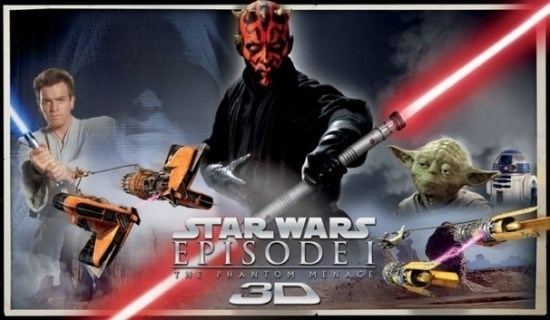
On Naboo, Padme reveals herself to the Gungans as Queen Amidala and persuades them into an alliance against the Trade Federation. Jar Jar leads his people in a battle against the droid army while Padme leads the hunt for Gunray in Theed, eventually capturing him and his aide, Rune Haako. In a starship hangar, Anakin enters a vacant starfighter and inadvertently triggers its autopilot, joining the battle against the Federation droid control ship in space. Anakin ventures into the ship and destroys it from within, deactivating the droid army. Meanwhile, Qui-Gon and Obi-Wan battle Darth Maul, who mortally wounds Qui-Gon before being bisected by Obi-Wan. As he dies, Qui-Gon asks Obi-Wan to train Anakin. Subsequently, Palpatine is elected as the new Supreme Chancellor and Gunray is formally arrested. The Jedi Council makes Obi-Wan a fully fledged Jedi Knight and reluctantly accepts Anakin as Obi-Wans apprentice. At a festive ceremony, Padme presents a gift of appreciation and friendship to the Gungans.
Cast
Development
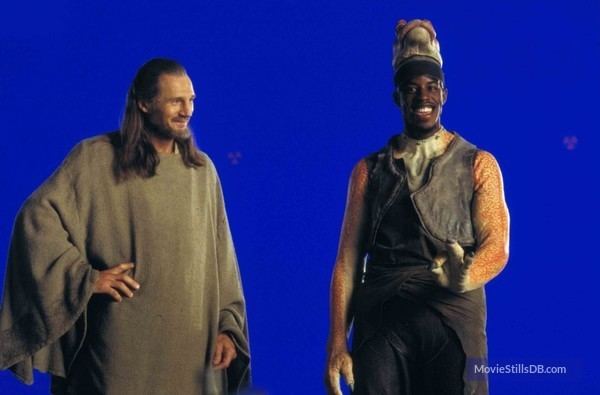
While he was writing the original Star Wars, George Lucas reportedly realized the story he had written was too vast in scope to be covered in one film. The original film was intended to introduce a wider story arc that could be told in sequels if the first film was successful. Star Wars evolved from the first film in the sequence to a film belonging to the sagas second trilogy. By the time of the third draft, Lucas had negotiated a contract that gave him rights to make two sequels. He had also developed an elaborate backstory to aid his writing process. While writing the first sequel, The Empire Strikes Back, Lucas considered directions in which to take the story. He turned the villain Darth Vader into the father of hero Luke Skywalker and developed a backstory in which Vader was once Jedi Knight Anakin Skywalker, a powerful warrior who defected to the dark side of the Force. With this backstory in place, Lucas decided the series would be a trilogy, renaming the film from "Episode II" to "Episode V". By the time of the trilogys final film, Return of the Jedi, Vader became a tragic character and was ultimately redeemed. Lucas said he was "burned out" and would take a break from the series.

After losing much of his fortune in a divorce settlement in 1987, George Lucas had no desire to return to Star Wars and had unofficially canceled his sequel trilogy by the time of Return of the Jedi. Because Lucas had developed most of the backstory, the idea of prequels continued to fascinate him. In the early 1990s, Star Wars saw a resurgence in popularity in the wake of Dark Horses comic line and Timothy Zahns trilogy of novels. Lucas saw there was still a large audience for his idea of a prequel trilogy and with the development of special effects generated with computer-generated imagery (CGI), Lucas considered returning to his saga and directing the film. In 1993, it was announced in Variety and other sources that he would be making the prequels. Lucas began outlining the story; Anakin Skywalker rather than Obi-Wan Kenobi would be the main protagonist and the series would be a tragedy examining Darth Vaders origins. Lucas also began to change the prequels timeline relative to the original series, "filling-in" the history, backstory, existing parallel or tangential to the originals and beginning a long story starting with Anakins childhood and ended with his death. This was the final step toward turning the franchise into a saga.
George Lucas began writing the new Star Wars trilogy on November 1, 1994. The screenplay of Star Wars was adapted from Lucas 15-page outline that was written in 1976, which he designed to help him keep track of the characters backstories and events that occurred before the original trilogy. Anakin was first written as a twelve-year-old, but Lucas reduced his age to nine because he felt the lower age would fit better the plot point of Anakin being affected by his mothers separation from him. Eventually, Anakins younger age led Lucas to rewrite his participation in the final battle, small scenes with him finding out how the ship works, and R2-D2 helping Anakin to make the story more believable. The films working title was The Beginning; Lucas later revealed that its true title was The Phantom Menace; a reference to Palpatine hiding his true identity as an evil Sith Lord behind the facade of a well-intentioned public servant.
The larger budget and possibilities opened up by the use of digital effects made Lucas "think about a much grander, more epic scale—which is what I wanted Star Wars to be". The story ended with five simultaneous, ongoing plots, one leading to another. The central plot is Palpatines intent to become Chancellor, which leads to the Trade Federations attack to Naboo, the Jedi being sent there, Anakin being met along the way, and the rise of the Sith Lords. As with the original trilogy, Lucas constructed The Phantom Menace to illustrate several themes through the narrative. Duality is a frequent theme; Amidala is a queen who passes as a handmaiden, Palpatine plays on both sides of the war, and Obi-Wan is in conflict with his rebellious master but eventually becomes Qui-Gon by confronting his rebellious personality and accepting his responsibilities. Balance is also frequently used; Anakin is supposedly the one chosen to bring balance to the Force and the characters have someone to influence them—Lucas said, "Anakin needed to have a mother, Obi-Wan needed a Master, Darth Sidious needed an apprentice" as without interaction and dialogue "you wouldnt have drama".
Pre-production and design
Before Lucas had started writing, his producing partner Rick McCallum was prepararing for the film. McCallum stated that his experience with The Young Indiana Jones Chronicles led to many of his decisions on The Phantom Menace, such as long-term deals with actors and soundstages, the employment of recent graduates with no film experience, and the creation of sets and landscapes with digital technology. In April 1994, McCallum started searching for artists in art, architecture and design schools, and in mid-year he began location scouting with production designer Gavin Bocquet. Industrial Light & Magic (ILM) art director Doug Chiang impressed McCallum the most and was hired as the design director.
Within three to four months of Lucas beginning the writing process, Chiang and his design team started a two-year process of reviewing thousands of designs for the film. Chiang stated that Lucas intended Episode I to be stylistically different from the other Star Wars films; it would be "richer and more like a period piece, since it was the history leading up to A New Hope". The three planets on which the story takes place—some with varied environments such as the human and Gungan cities of Naboo and three buildings in Coruscant. With the exception of the Gungan city, which had an art nouveau-inspired visual, these locations would be given distinctive looks with some basis in the real world. The concept drawings of Ralph McQuarrie for the original trilogy served as the basis for Mos Espa—which was also inspired by old Tunisian hotels and buildings and had touches such as a market place to differentiate it from A New Hope???s Mos Eisley—and Coruscant, in particular a metropolis design which became the basis for the Senate. Bocquet would later develop the work of Chiangs team and design the interiors, translating the concepts into construction blueprints with environments and architectural styles that had some basis in reality "to give the audience something to key into". Some elements were directly inspired by the original trilogy; Lucas described the battle droids as predecessors to the Stormtroopers. Chiang uses that orientation to base the droids on the Imperial soldiers, only in the same style of stylized and elongated features seen in tribal African art.
Terryl Whitlatch, who had a background on zoology and anatomy, was in charge of creature design. Many of the aliens are hybrids, combining features of real animals. At times entire food chains were developed even though only a small percentage of them would appear in the film. Whitlatch also designed detailed skeletons for the major characters and facial muscles on Jar Jar Binks as a reference for ILMs animators. Each creature would reflect its environment; those on Naboo were more beautiful because the planet is "lush and more animal-friendly", Tatooine has rough-looking creatures "with weather-beaten leathery skin to protect them from the harsh desert elements", and Coruscant has bipedal, human-looking aliens.
Stunt coordinator Nick Gillard was recruited to create a new Jedi fighting style for the prequel trilogy. Gillard likened the lightsaber battles to a chess game "with every move being a check". Because of their short-range weapons, Gillard thought the Jedi would have had to develop a fighting style that merged every swordfighting style, such as kendo and other kenjutsu styles, with other swinging techniques, such as tennis swings and tree-chopping. While training Liam Neeson and Ewan McGregor, Gillard wrote a sequence which lasted around 60 seconds and intended to be around five or six sequences per fight. Lucas later referred to the Jedi as "negotiators" rather than high-casualty soldiers. The preference of hand-to-hand combat was intended to give a spiritual and intellectual role to the Jedi. Because Gillard thought the stunt jumps with the actors and stuntmen dangling from wires did not look realistic, air rams were used to propel them into the air instead.
Lucas decided to make elaborate costumes because the films society was more sophisticated than the one depicted in the original trilogy. Designer Trisha Biggar and her team created over 1,000 costumes that were inspired by various cultures. Biggar worked closely with concept designer Iain McCaig to create a color palette for the inhabitants of each world: Tatooine followed A New Hope with sun-bleached sand colors, Coruscant had grays, browns and blacks, and Naboo had green and gold for humans while Gungans wore "a leathery look, like their skin". The Jedi costumes followed the tradition from the original film; Obi-Wans costume was inspired by the costume that was worn by Guinness. Lucas said he and Biggar would look at the conceptual art to "translat[e] all of these designs into cloth and fabric and materials that would actually work and not look silly". Biggar also consulted Gillard to ensure the costumes would accommodate action scenes, and consulted the creature department to find which fabrics "wouldnt wear too heavily" on the alien skins. A huge wardrobe department was set up at Leavesden Film Studios to create over 250 costumes for the main actors and 5,000 for the background ones.
Filming
Filming began on June 26, 1997, and ended on September 30 of that year, primarily taking place at Leavesden Film Studios in England. Leavesden was leased for a two and a half years so the production company could leave the sets intact and return after principal photography had been completed. The forest scenes on Naboo were filmed at Cassiobury Park in Watford, Hertfordshire. Pick-ups were shot between August 1998 and February 1999 after Lucas screened a rough cut of the film for friends and colleagues in May 1998. Most of the action and stunts were filmed by Roger Christians second unit, which worked alongside the main unit instead of afterwards because of the high number of shots to be completed daily.
The Tunisian desert was again used for the Tatooine scenes; Mos Espa was built outside the city of Tozeur. On the night following the third day of shooting in Tozeur, an unexpected sandstorm destroyed many of the sets and props. The production was quickly rescheduled to allow for repairs and was able to leave Tunisia on the date originally planned. The Italian Caserta Palace was used as the interior of the Theed City Naboo Palace; it was used as a location for four days after it had been closed to visitors. Scenes with explosions were filmed on replica sets in Leavesden.
A binder with the films storyboards served as a reference for live-action filming, shots that would be filmed in front of a chroma key blue screen, and shots that would be composed using CGI. The sets were often built with the parts that would be required on screen; often they were built only up to the heights of the actors. Chroma key was extensively used for digital set extensions, backgrounds or scenes that required cinematographer David Tattersall to seek powerful lamps to light the sets and visual effects supervisor John Knoll to develop software that would remove the blue reflection from shiny floors. Knoll, who remained on set through most of the production, worked closely with Tatterstall to ensure that the shots were suitable to add effects later. The cameras were fitted with data capture models to provide technical data for the CGI artists.
The Phantom Menace was the final Star Wars film to be shot on 35mm film until Episode VII (Star Wars: The Force Awakens). Some scenes, mostly of elements filmed by the special effects team, were shot on high definition, digital video tapes to test the performance of digital recordings, which Lucas and McCallum considered the next logical step because of the amount of digitizing—an expensive process compared to recording directly on digital media—for the compositing of computer-generated effects. All future films would be shot using Sony CineAlta high-definition video cameras.
Editing took two years; Paul Martin Smith started the process in England and focused on dialogue-heavy scenes. Ben Burtt—who was also the films sound editor—was responsible for action sequences under Lucas supervision. Non-linear editing systems played a large part in translating Lucas vision; he constantly tweaked, revised and reworked shots and scenes. The final sound mix was added in March 1999 and the following month the film was completed after the delivery of the remaining visual effects shots.
Effects
About 1,950 of the shots in The Phantom Menace have visual effects. The scene in which toxic gas is released on the Jedi is the only sequence with no digital alteration. The work was so extensive that three visual effects supervisors divided the workload among themselves—John Knoll supervised the on-set production and the podrace and space battle sequences, Dennis Muren supervised the underwater sequence and the ground battle, and Scott Squires, alongside teams assigned for miniature effects and character animation, worked on the lightsaber effects.
Until the films production, many special effects in the film industry were achieved using miniature models, matte paintings, and on-set visual effects—although other films had made extensive use of CGI. Knoll previewed 3,500 storyboards for the film; Lucas accompanied him to explain factors of the shots that would be practical and those which would be created through visual effects. Knoll later said that on hearing the explanations of the storyboards, he did not know how to accomplish what he had seen. The result was a mixture of original techniques and the newest digital techniques to make it difficult for the viewer to guess which technique was being used. Knoll and his visual effects team wrote new computer software, including cloth simulators to allow a realistic depiction of the digital characters clothing, to create certain shots. Another goal was to create computer-generated characters that could act seamlessly with live-action actors. While filming scenes with CGI characters, Lucas would block the characters using their corresponding voice actors on-set. The voice actors were then removed and the live-action actors would perform the same scene alone. A CGI character would later be added into the shot to complete the conversation. Lucas also used CGI to correct the physical presence of actors in certain scenes. Practical models were used when their visuals helped with miniature sceneries for backgrounds, set extensions, and model vehicles that would be scanned to create the digital models or filmed to represent spaceships and podraces.
Lucas, who had previously confronted problems with the props used to depict R2-D2, allowed ILM and the productions British special effects department to create their own versions of the robot. Nine R2-D2 models were created; one was for actor Kenny Baker to be dropped into, seven were built by ILM and featured two wheelchair motors capable of moving 440 pounds (200 kg), enabling it to run and be mostly used in stage sets, and the British studio produced a pneumatic R2-D2 that could shift from two to three legs and was mostly used in Tunisia because its motor drive system allowed it to drive over sand.
Lucas originally planned to create many of the aliens with computer graphics, but those that would be more cost-effectively realized with masks and animatronics were created by Nick Dudmans creature effects team. These included the Neimodians, background characters in Mos Espa, the Jedi Council, and the Galactic Senate. Dudmans team was told where the creatures would be required six months before principal photography begun, and they rushed the production. The Neimodian suits, which were originally intended as digital characters, were delivered one day before they would be required on set. Dudman traveled to Skywalker Ranch to see the original creatures that could be reused, and read the script for a breakdown of scenes with practical creatures, leaving only the more outlandish designs to be created using CGI.
To research for the podrace vehicles, the visual effects crew visited a jet aircraft junkyard outside Phoenix, Arizona and scavenged four Boeing 747 engines. Life-sized replicas of the engines were built and sent to Tunisia to provide reference in the film. Except for Jake Lloyd inside a hydraulically controlled cockpit and a few practical podracer models, the entire podracing scene—which the effects crew designed to be as "out of this world" as possible—is computer-generated.
Music
As with previous Star Wars films, Star Wars Episode I: The Phantom Menace???s score was composed and conducted by John Williams. He started composing the score in October 1998 and began recording the music with the London Voices and London Symphony Orchestra at Abbey Road Studios on February 10, 1999. Williams decided to use electronic instruments such as synthesizers to enhance the sound and choral pieces to "capture the magical, mystical force that a regular orchestra might not have been able to provide", and create an atmosphere that was "more mysterious and mystical and less military" than those of the original trilogy. One of the most notable tracks is "Duel of the Fates", which uses the chorus to give a religious, temple-like feel to the epic lightsaber duel. The track was made into a music video. While composing Anakins theme, Williams tried to reflect the innocence of his childhood and to foreshadow his transformation into Darth Vader by using slight suggestions of "The Imperial March" in the melody.
The films soundtrack was released by Sony Classical Records on May 4, 1999. This album featured the score, which Williams restructured as a listening experience; it is not presented in film order and omits many notable cues from the film because of the space restriction of the compact disc. A two-disc "Ultimate Edition" was released on November 14, 2000. The set features almost the entire score as it is heard in the film, including all of the edits and loops that were made for the sound mix.
Themes
Like previous Star Wars films, The Phantom Menace makes several references to historical events and films that George Lucas watched in his youth. The Star Wars films typically mix several concepts from different mythologies together.
The Jedi practice Zen-like meditation and martial arts, as did the ancient Japanese Samurai warriors. The name "Qui-Gon" adapts the term Qigong, which refers to a Chinese discipline involving meditation and cultivation of the flow of the vital energy called "Chi" or "Qi" for healing, health and combat. The words Chi (Chinese), ki (Japanese) and the Indian term "Prana" all refer to the energy that is thought to flow through all living things, from the source of all chi (or power) which is "The Way" or "The Tao" in Chinese philosophy. In Taoist philosophy, from The Way, yin and yang—the opposing but complementary aspects of reality or nature—are born. Unlike Chinese philosophy, in which yin and yang are not moral qualities, the ancient Persian philosophy of Zurvanism taught that the dualism of dark and light forces are locked in an eternal battle while being two sides (or evolutes) of the same "Force", the force of time itself (Zurvan)—the prime mover. These elements derive primarily from Eastern and Iranian religions and myths.
There are many references to Christian beliefs in the film, such as the appearance of Darth Maul, whose design draws heavily from traditional depictions of the Christian devil, complete with red skin and horns. Mauls facial tattoos were inspired by the indigenous peoples of Brazil. The Star Wars film cycle features a similar Christian narrative involving Anakin Skywalker; he is the "chosen one"—the individual prophesied to bring balance to the Force—who was conceived of a virgin birth and is tempted to join the Sith. Anakins fall from grace seemingly prevents him from fulfilling his destiny as the "chosen one". The inspiration behind the story of the virgin birth parallels a concept developed by Joseph Campbell and his work on The Hero with a Thousand Faces, which heavily influenced Lucas writing of the original Star Wars trilogys outline.
Japanese films such as Akira Kurosawas The Hidden Fortress influenced the original Star Wars film; scholars say that The Phantom Menace was likewise influenced by Japanese culture. Film historians Geoff King and Tanya Krzywinska write, "The costume and make-up designs ... favour a mixture of the gothic and the oriental over anything very futuristic. The gothic is most strongly apparent in Darth Mauls demonic horns and the red and black make-up mask that borrows from the facial designs found in depictions of Japanese demons". King and Krzywinska say that "Qui-Gons pony tail and Obi-Wans position of apprentice further encourage a reading in terms of the Samurai tradition". The also say "Amidala, in keeping with her status and character, has a number of highly formal outfits ... to go with hair sculpted into a curve that frames make-up of a Japanese cast".
Release
The release of the first new Star Wars film in 16 years was accompanied by a considerable amount of attention. Few film studios released films during the same week as the release of The Phantom Menace; DreamWorks and Universal Studios released The Love Letter on May 21 and Notting Hill on May 28, respectively. The Love Letter was a commercial failure but Notting Hill fared better and followed The Phantom Menace closely in second place. Employment consultant firm Challenger, Gray & Christmas estimated that 2.2 million full-time employees missed work to attend the film, resulting in a US$293 million loss of productivity. According to The Wall Street Journal, so many workers announced plans to view the premiere that many companies closed on the opening day. Queue areas formed outside cinema theaters over a month before ticket sales began.
More theater lines appeared when it was announced that cinemas were not allowed to sell tickets in advance until two weeks into the release. This was because of a fear that family theater-goers would be either unable to receive tickets or would be forced to pay higher prices for them. Instead, tickets were to be sold on a first-come-first-served basis. However, after meetings with the National Association of Theatre Owners, Lucasfilm agreed to allow advance ticket sales on May 12, 1999, provided there was a limit of 12 tickets per customer. As a result, some advance tickets were sold by scalpers at prices as high as US$100 apiece, which a distribution chief called "horrible" and said it was exactly what they wanted to avoid. Daily Variety reported that theater owners received strict instructions from Lucasfilm that the film could only play in the cinemas largest auditorium for the first 8–12 weeks, no honor passes were allowed for the first eight weeks, and they were obliged to send their payments to distributor 20th Century Fox within seven days.
Despite worries about the film being finished on time, two weeks before its theatrical release Lucasfilm preponed the release date from May 21 to May 19, 1999. At the ShoWest Convention, Lucas said the change was intended to give the fans a "head start" by allowing them to view it during the week and allowing families to view it during weekends. Foreshadowing his future conversion to digital cinematography, Lucas said the film would be released on four digital projectors on June 18, 1999. Eleven charity premieres were staged across the United States on May 16, 1999; receipts from the Los Angeles event, where corporate packages were available for between US$5,000 and US$25,000; proceeds were donated to the Elizabeth Glaser Pediatric AIDS Foundation. Other charity premieres included the Dallas premiere for the Childrens Medical Center, the Aubrey Fund for Pediatric Cancer Research at the Sloan-Kettering Hospital in New York, the Big Brother/Sister Association of the Philadelphia premiere, and the Childrens National Medical Center in Washington, D.C. A statement said that tickets were sold at US$500 apiece and that certain sections of the theaters were set aside for disadvantaged children.
Marketing
Lucasfilm spent US$20 million on the films advertising campaign and made promotional licensing deals with Hasbro, Lego, Tricon Global Restaurants, and PepsiCo. Lucasfilm also helped the Star Wars fan club to organize an event called Star Wars Celebration, which was held in Denver, Colorado between April 30 and May 2, 1999.
The teaser trailer was released on selected screens accompanying Meet Joe Black on November 13, 1998, and media reported that people were paying full admission at theaters to see the trailer. A second trailer was released on March 12, 1999, with the film Wing Commander. Again, many fans paid full theater admission to watch the new trailer. A bootlegged version of the preview was leaked to the Internet the same day. The next morning, the trailer was released on the films official website and shortly afterwards the servers became overloaded. The theatrical trailer caused even more media attention because it was premiered in theaters and screened at the |ShoWest Convention in Las Vegas, and was aired on Entertainment Tonight and Access Hollywood.
The teaser poster, featuring Anakin with his shadow forming Darth Vaders silhouette, was released on November 10, 1998. After Lucas opted for a drawn theatrical poster, Drew Struzan, the artist responsible for the Special Edition posters, was commissioned to illustrate, and the poster was unveiled on March 11, 1999. Lucasfilm dictated that, contractually, Struzans illustration was the only art the foreign distributors could use, and other than the text, it could not be modified in any way.
Many tie-in adaptations, such as a LucasArts video game for the PlayStation and PC, a pinball machine by Williams, a four-part comic book adaptation by Dark Horse Comics, and a junior novelization by Scholastic were released. The films official novelization was written by Terry Brooks, who met with Lucas before writing the book and receiving his approval and guidance. It included information about pending developments in the following two installments of the series.
General Mills and Brisk were promotional partners in North America for the 2012 3D re-release but promotion was limited. The film was extensively promoted in Japan; promotional products were sold by 7-Eleven, Dominos Pizza, Pepsi and Gari-Gari Kun. Kelloggs promoted the film internationally, and French restaurant Quick launched three Star Wars-themed burgers. Lucasfilm also partnered with Variety, the Childrens Charity to raise funds for children through the sale of a special edition badge.
Home media
The film was released worldwide on VHS between April 3 and 8, 2000. Two versions were released in North America on April 4—a standard pan and scan version and a widescreen Collectors Edition version. In its first two days of availability, the regular version sold 4.5 million copies and the limited edition sold 500,000. It was the first Star Wars film to be officially released on DVD, on October 16, 2001. The special features included seven deleted scenes completed specifically for the DVD, a commentary track featuring Lucas and producer Rick McCallum, and several documentaries—including a full-length documentary entitled "The Beginning: Making Episode I". The Phantom Menace became the fastest selling DVD ever in the U.S.; 2.2 million copies were sold in its first week after release.
The DVD version was re-released in a prequel trilogy box set on November 4, 2008. A Laserdisc version of The Phantom Menace was released in Japan several months before it was available on DVD in the U.S. The Star Wars films were released by 20th Century Fox Home Entertainment on Blu-ray Disc on September 16, 2011; The Phantom Menace was restored to improve the picture quality and remove the magnification present on the previous DVD release, restoring approximately 8 percent of the picture to the frame. In the Blu-ray release of The Phantom Menace, the Yoda puppet was replaced with a CGI model, making it consistent with the other films of the prequel trilogy.
On April 7, 2015, the Walt Disney Studios, 20th Century Fox, and Lucasfilm jointly announced the digital releases of the six released Star Wars films. As Lucasfilm had retained digital distribution rights to Episodes I thru III and IV thru VI, Walt Disney Studios Home Entertainment released The Phantom Menace for digital download on April 10, 2015.
3D re-release
On September 28, 2010, it was announced that all six films in the series would be stereo-converted to 3D. These would be re-released in episode order, beginning with The Phantom Menace, which was released to cinemas in February 2012. Prime Focus Limited did the conversion under close supervision by ILM. However, the 3D re-releases of Star Wars Episode II: Attack of the Clones and Star Wars Episode III: Revenge of the Sith were postponed after Lucasfilm was bought by The Walt Disney Company, which decided to focus on the development of Star Wars: The Force Awakens.
Lucas stated the 3D re-release was "just a conversion" of the films 2011 Blu-ray release and no additional changes were made. Only a change to Anakins magnetic wand during the podrace scene—its tip was sharpened to more accurately fit the original 2D photography to the new 3D image—was confirmed.
Critical reception
The film received generally mixed to positive reviews. As of 2014, The Phantom Menace holds a 57% "Rotten" rating on the review aggregator website Rotten Tomatoes, with an average rating of 5.8/10 based on 191 reviews, with the critics consensus: "Lucas needs to improve on the plot and character development, but theres plenty of eye candy to behold." It also has a score of 51 out of 100 ("mixed or average reviews") on Metacritic based on 36 reviews. On both sites, it is the lowest-rated film in the Star Wars film series, excluding the animated feature Star Wars: The Clone Wars. Many aspects of the scripting were criticized, especially that of the character Jar Jar Binks, who was regarded by many members of the older fan community as toyetic—a merchandising opportunity rather than a serious character. Kenneth Turan of the Los Angeles Times described Binks as "a major miscue, a comic-relief character whos frankly not funny." George Lucas criticized the American media for using fan opinions from the Internet as a reliable source for news stories. In 2002, with the release of Attack of the Clones, Ewan McGregor said he thought The Phantom Menace was "kind of flat", and said, "I think there is much more humor and ... color in Episode II." Drew Grant of Salon.com wrote, "Perhaps the absolute creative freedom director George Lucas enjoyed while dreaming up the flicks comic relief—with no studio execs and not many an independently minded actor involved—is a path to the dark side."
Conversely, Roger Ebert of the Chicago Sun-Times gave it three-and-a-half stars out of four and called it "an astonishing achievement in imaginative filmmaking", and said "Lucas tells a good story." Ebert also wrote that "If some of the characters are less than compelling, perhaps thats inevitable" because it is the opening film in the new trilogy. He concluded his review by saying that rather than Star Trek films, filmmakers could "[g]ive me transparent underwater cities and vast hollow senatorial spheres any day." Owen Gleiberman of Entertainment Weekly rated the film a B and complimented Liam Neesons performance and the action scenes. In an Entertainment Weekly review for the DVD release, Marc Bernardin gave the film a C-, calling it "haplessly plotted, horribly written, and juvenile". ReelViews.nets James Berardinelli wrote;
Looking at the big picture, in spite of all its flaws, The Phantom Menace is still among the best "bang for a buck" fun that can be had in a movie theater. It isnt as fresh as the original Star Wars nor does it have the thematic richness and narrative complexity of The Empire Strikes Back, but it is a distinct improvement over Return of the Jedi. In fact, after Return of the Jedi, I didnt have a burning desire to return to this galaxy far, far away, but, with The Phantom Menace, Lucas has revived my interest. Now, its with genuine regret that I realize the next segment of the series is three long years away.
Andrew Johnston of Time Out New York wrote, "Lets face it: no film could ever match the expectations some have for Episode I – The Phantom Menace. Which isnt to say its a disappointment: on the contrary, its awesomely entertaining, provided you accept it on its own terms ... Like the original film, its a Boys Own adventure yarn with a corny but irresistible spiritual subtext. The effects and production design are stunning, but they always serve the story, not the other way around." Susan Wloszczyna of USA Today said the film did "plenty right" and praised the characters Darth Maul and Watto. David Cornelius of efilmcritic.com said the films better moments "dont merely balance out the weaker ones—they topple them." Colin Kennedy of Empire magazine said that despite problems with pacing and writing "there is still much pleasure to be had watching our full-blown Jedi guides in action." He praised the visuals and Liam Neesons performance, and said the duel between Darth Maul and the Jedi was "the sagas very best lightsaber battle".
Empire magazine ranked The Phantom Menace on its list of "500 Greatest Movies Of All Time", while Entertainment Weekly and Comcast included the film on their lists of the worst movie sequels. James Berardinelli wrote, "The Phantom Menace was probably the most overhyped motion picture of the last decade (if not longer), and its reputation suffered as a result of its inability to satisfy unreasonable expectations." William Arnold of the Seattle Post-Intelligencer agreed that the films massive hype caused many of the negative reactions, saying "it built expectations that cant possibly be matched and scuttled [the] element of storytelling surprise." He also said the film was "well made and entertaining" and was much better than similar box office fare released around that year, such as The Mummy and The Matrix.
The introduction of midi-chlorians—microscopic organisms that mediate use of the Force—in the film has been controversial among fans. Some viewed it as a concept that negates the Forces spiritual quality, although the film still portrays the Force as a mysterious entity using the midi-chlorians to communicate with living beings. Film historian Daniel Dinello says, "Anathema to Star Wars fanatics who thought they reduced the Force to a kind of viral infection, midi-chlorians provide a biological interface, the link between physical bodies and spiritual energy." Religion expert John D. Caputo writes, "In the Gospel according to Lucas a world is conjured up in which the intractable oppositions that have tormented religious thinkers for centuries are reconciled ... The gifts that the Jedi masters enjoy have a perfectly plausible scientific basis, even if its ways are mysterious: their bodily cells have a heavier than usual concentration of midi-chlorians."
After the films release, there was controversy over whether several alien characters reflect racial stereotypes. For example the oafish, slow-witted Jar Jar Binks had long droopy ears reminiscent of dreadlocks and spoke with what many perceived as a Caribbean patois reminiscent of Jamaican Creole. The greedy and corrupt Neimoidians of the Trade Federation spoke with East Asian accents and the unprincipled trader Watto has been interpreted as a Jewish stereotype reminiscent of Charles Dickens character Fagin. Lucas has denied all of these implications; however, animator Rob Coleman said he viewed footage of Alec Guinness as Fagin in Oliver Twist to inspire his animators in the creation of Watto. One critic described Jar Jar Binks as "[s]ervile and cowardly ... a black minstrel-ish stereotype on par with Stepin Fetchit." Michael Eric Dyson, professor of African-American studies at Georgetown University, said the entire Gungan people seem oddly suggestive of a primitive African tribe. Dyson said, "The leader of Jar Jars tribe is a fat, bumbling buffoon with a rumbling voice, and he seems to be a caricature of a stereotypical African tribal chieftain."
Box office performance
Despite its mixed critical reception, The Phantom Menace was a financial success, breaking many box office records in its debut. It broke The Lost World: Jurassic Park???s records for the largest single-day gross for taking more than US$28 million in the opening day and fastest to gross US$100 million in five days. It also became the quickest film to reach the US$200 million and US$300 million marks, surpassing Independence Day and Titanic respectively. The Phantom Menace was 1999s most successful film, earning US$431,088,295 in North America and US$493,229,263 in other territories, taking US$924,317,558 worldwide. At that time, the film was the third-highest-grossing film in North America behind Titanic and Star Wars, and the second-highest-grossing film worldwide behind Titanic without adjusting for inflation of ticket prices. When adjusted for ticket price inflation, it ranked as the 19th-highest-grossing film domestically, making it the fourth Star Wars film to be in the Inflation-Adjusted Top 20. Outside North America, the film grossed over US$10 million in Australia (US$25.9 million), Brazil (US$10.4 million), France and Algeria (US$43 million), Germany (US$53.9 million), Italy (US$12.9 million), Japan (US$109.9 million), Mexico (US$12 million), Spain (US$25 million), and the United Kingdom and Ireland (US$81.9 million).
After its 3D re-release in 2012, the worldwide box office gross exceeded US$1 billion. Although in the intervening years the film had lost some of its rankings in the lists of highest-grossing films, the 3D re-release returned it to the worldwide all-time top ten for several months. In North America, its revenues overtook those of the original Star Wars as the sagas highest grossing film when not adjusting for inflation of ticket prices, and is currently the fifth-highest-grossing film in North America. In North America its ranking on the Adjusted for Ticket Price Inflation list climbed to 16th place—one place behind Return of the Jedi. The 3D re-release, which premiered in February 2012, earned US$43 million—US$$22.5 million of which was in North America—worldwide. As of June 2014, the 3D re-release has earned US$102,727,119 worldwide—including $43.5 million in North America—and has increased the films overall box office takings to US$474.5 million domestically, and US$552.5 million in other territories. The films earnings exceeded US$1 billion worldwide on February 22, 2012, making it the first Star Wars film and the eleventh film in history—excluding inflation—to do so.
Accolades
The Phantom Menace was nominated for three Academy Awards: Best Sound Editing, Best Visual Effects, and Best Sound Mixing (Gary Rydstrom, Tom Johnson, Shawn Murphy, and John Midgley); all of which went to The Matrix. The film received seven Golden Raspberry Award (Razzie) nominations for Worst Picture, Worst Director, Worst Screenplay, Worst Supporting Actor (Jake Lloyd as Anakin), Worst Supporting Actress (Sofia Coppola as Sache), Worst Screen Couple (Jake Lloyd and Natalie Portman), and Jar Jar Binks actor Ahmed Best won the Worst Supporting Actor category. The film won Saturn Awards for Best Costumes and Best Special Effects, the MTV Movie Award for Best Action Scene, and a Young Artist Award for Jake Lloyds performance. It was also nominated for—among others—the BAFTAs for Visual Effects and Sound, and the Grammy Award for Best Score Soundtrack for Visual Media.
References
Star Wars Episode I: The Phantom Menace WikipediaStar Wars Episode I: The Phantom Menace IMDb Star Wars Episode I: The Phantom Menace themoviedb.org
